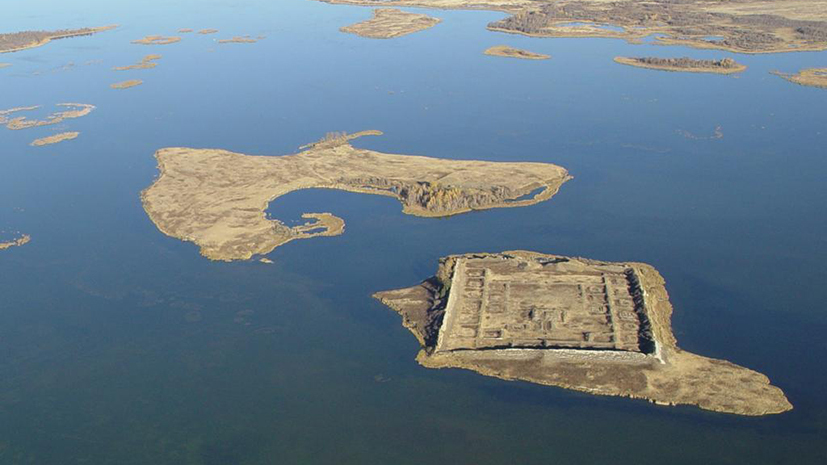The paleogeographers of Moscow State University named after Lomonosov as part of an international team determined the age of the start of the construction of the Por-Bazhyn adobe fortress in Tuva, as well as put forward a hypothesis about its purpose. This was reported in the journal of the National Academy of Sciences of the USA Proceedings of the National Academy of Sciences.
The ruins of the Uigur fortress of Por-Bazhyn of the 8th – 9th centuries were discovered back in 1891 by the Russian ethnographer Dmitry Klements in an inaccessible region of Tuva on one of the islands of Lake Tere-Khol. Disputes about the origin and purpose of this building have been going on for many years.
Archaeologist Sevian Weinstein studied the ruins in the 1950s and 60s and proved that Por-Bazhyn was built during the third Uigur Kaganate in the VIII century. According to indirect data, Weinstein proposed to consider the year 750 as the date of the foundation of the fortress - it was adopted by subsequent researchers.
- The ruins of the ancient Uyghur fortress Por-Bazhyn
- © Andrey Panin / Moscow State University M.V. Lomonosov
The following significant work on the study of the fortress was carried out in 2007-2008 on the initiative of the then-head of the Ministry of Emergencies, a native of Tuva, Sergei Shoigu. Those studies showed that the cultural layer was very poor. It turned out that for unknown reasons, the fortress was not used at all after the construction.
Now, with the help of radiocarbon analysis and astrophysical studies, an international group of specialists managed to establish the exact time of the beginning of the construction of the fortress.
“The most valuable result of our work is the exact dating of the archaeological complex itself, which allowed us to change the idea of its purpose,” said one of the authors of the study, professor of the geographical faculty of Moscow State University, deputy director of the Institute of Geography of the Russian Academy of Sciences Andrei Panin.
According to him, at the base of the adobe walls of the fortress were larch trunks, which were perfectly preserved in permafrost. From three trunks, saw cuts were taken to determine the age of wood by the method of radiocarbon analysis.
Back in 2009, scientists hypothesized that the fortress was built a quarter of a century later than Weinstein thought, but then it was not possible to prove it.
However, already in 2012, a study was published by Japanese scientists who dated single annual rings of a 1000-year-old cedar. On wood, they discovered the so-called Miyake event - a surge in the content of radiocarbon in the atmosphere in 775 associated with an abnormal decrease in the luminosity of the Sun.
The results of the analysis of saw cuts from the Por-Bajin fortress confirmed that the “Miyake event” was found in the third ring from the bark, said Professor Panin. Further study of the youngest ring at the cellular level allowed scientists to determine that the tree was cut down in the summer. Thus, not only the year was established, but also the construction start season - the summer of 777.
The establishment of an exact date fundamentally changed the concept of the historical context of construction. At this time, Professor Panin noted, the Uyghur Khanate passed through a painful religious reform - the adoption of Manichaeism.
“In 779, an anti-Manichaean coup occurred, during which the ruler was killed. The proximity of this date to our dating of the building made it possible to assume that its purpose was not fortification, as previously thought, but a religious one - it was a Manichaean monastery, ”concluded Professor Panin.
According to him, the monastery was built on the eve of the coup and the old rulers simply did not have time to use it, and the new one was no longer needed. This theoretically explains the main mystery of Por Bajin - the lack of traces of its use.
“Our study is probably the first example in the world of using radiocarbon diagnostics of astrophysical events of the Middle Ages to accurately date archaeological sites. Since another Miyake event in 993 has now been discovered, you can be sure that this method will be increasingly used, ”concluded Professor Panin.

